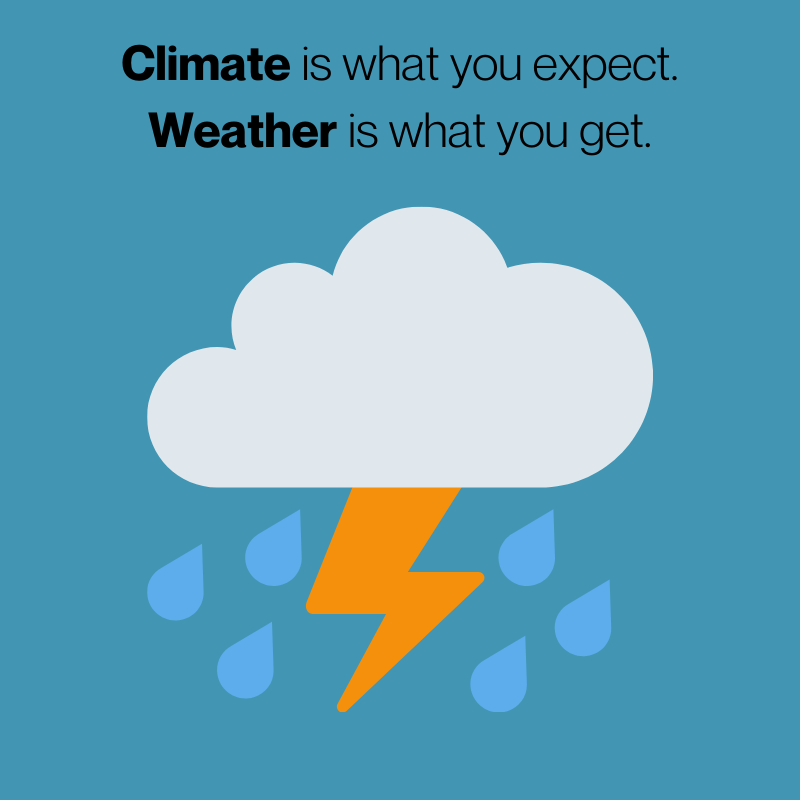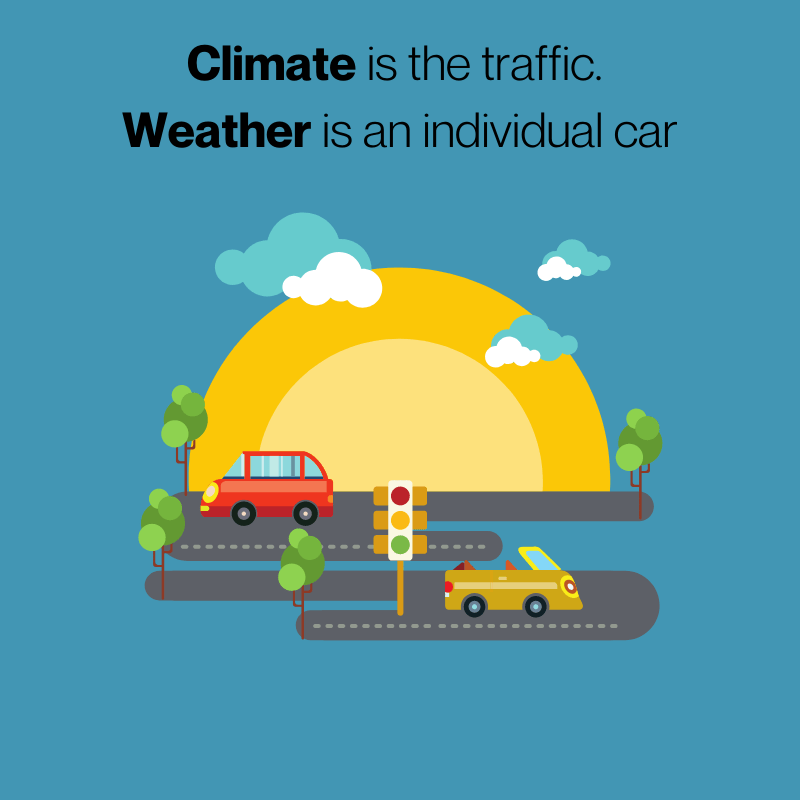Climate curious: What's the difference between weather and climate?
And what weather records were made to be broken?

Go Deeper.
Create an account or log in to save stories.
Like this?
Thanks for liking this story! We have added it to a list of your favorite stories.
Welcome to Climate Curious, where we answer your most pressing questions about climate change, from the complicated to the too-afraid-to-ask. Got a question you’re dying to ask? Share it here. And while you’re there, vote for the other questions you think we should tackle next.
It's often pointed out that weather and climate are two different things. But when noteworthy weather records are broken, we often point to climate change, with all our climate anxiety.
With 150 years or so of weather records, wouldn't some of these records just naturally be broken?
Is there any way to tell the difference between which records represent the ongoing nature of weather and which at are climate-based events? — Rich Halvorsen
For this question, we turned to Mark Seeley, a professor emeritus of climatology and meteorology at the University of Minnesota and a regular Friday presence on MPR News’ Morning Edition.
What’s the difference between weather and climate?
Weather, Seeley said, is the state of the atmosphere now, at a moment in time. It’s highly variable.
Turn Up Your Support
MPR News helps you turn down the noise and build shared understanding. Turn up your support for this public resource and keep trusted journalism accessible to all.
The work of meteorologists, who focus on weather, is centered around understanding the state of the atmosphere in small intervals: Now, a few hours from now, tomorrow, etc.
But climate is the history of that weather dynamic. It involves not only the long-term averages of weather conditions — like temperature, precipitation, wind, and others — but the distribution of those conditions over the long term and across many geographies.
If that all still sounds a little complicated, Seeley said, climatologists have pulled together a handful of analogies that might be handy to consider:
Weather is your mood today. Climate is your personality.
Weather is the song that’s playing right now. Climate is the playlist.
Weather is the roll. Climate is the dice.
Weather is this turn at bat. Climate is your batting average.
Weather is a single wave. Climate is the tide.
Weather is an individual car. Climate is the traffic.
Weather is what you’re wearing. Climate is in the clothes you buy.
In general, he said, climate is what you expect — weather is what you get.
What about weather that feels different from the norm?
Sometimes, we don’t get what we expect, when it comes to weather.
But Seeley said that it’s important to remember that weather can vary within climate trends.
He used another analogy: Think about a person walking a dog on a leash. The person has a destination. They’re going from Point A to Point B. But as they’re moving from where they started to where they’re going, the dog is pulling on that leash, sniffing around, moving outside the person’s straightforward trajectory.
The length of that leash, Seeley said, is the variability in weather. The dog roams, but only as far as the leash will allow. The weather changes are that dog, roaming. But the person’s trajectory, from Point A to Point B, is like the climate, which stays generally the same.
Over time, the weather might vary dramatically — even in a short window of time — within those climate pathways. But as long as the weather remains generally within that trajectory and the length of that leash, Seeley said, the weather is behaving as we’d expect it to, given what we know about the climate.
Given that variability, what records were made to be broken?
Seeley has been studying Minnesota’s weather measurements that go back more than 150 years — before Minnesota was even a state.
Within those measurements, he said, there are certain records on certain dates that are considered benign: The highest amount of rainfall on record for a specific day of the year is well within what we would expect to happen at that time of year, for instance. Those benign records, he said, are considered not statistically unusual, and therefore don’t raise a lot of alarm.
But there are some other measurements that are more extreme.
Seeley said he’s seeing, for instance, that the state’s more extreme records are being broken most commonly by large margins.
That, he said, is when climate change most likely comes into play.
Are there weather patterns that are indicative of climate change?
Because the climate is changing, Seeley said, extremes can occur more frequently.
One example is the mixing depth: The atmosphere above us can now, thanks to climate change, hold more water vapor, which means that when that volume gets saturated and it rains, we can have heavier, more extreme inundations.
“The length of the leash is expanding in Minnesota,” Seeley said. That means the variation in weather conditions that we can experience is expanding: It’s possible now to have a record warm winter, and then not long after, have an intensely cold winter, like we had last year.
That, Seeley said, is the expansion of the leash. Here in Minnesota, that leash is expanding — but in other places, primarily in lower latitudes, it’s contracting. The coping mechanisms that are required of us, then, he said, are more significant than those in lower latitudes.





